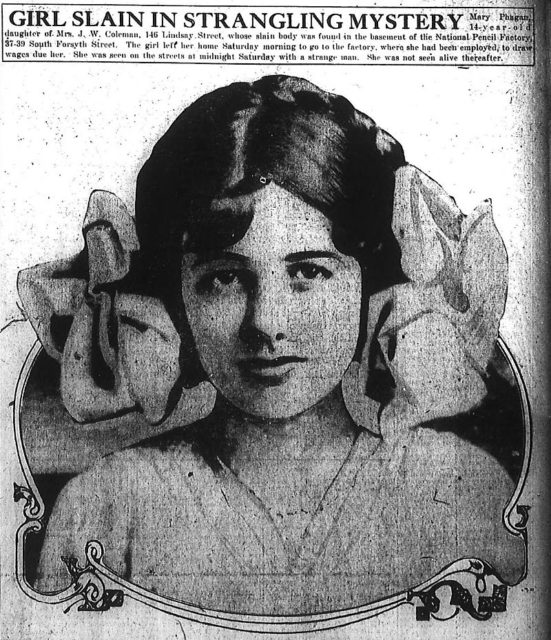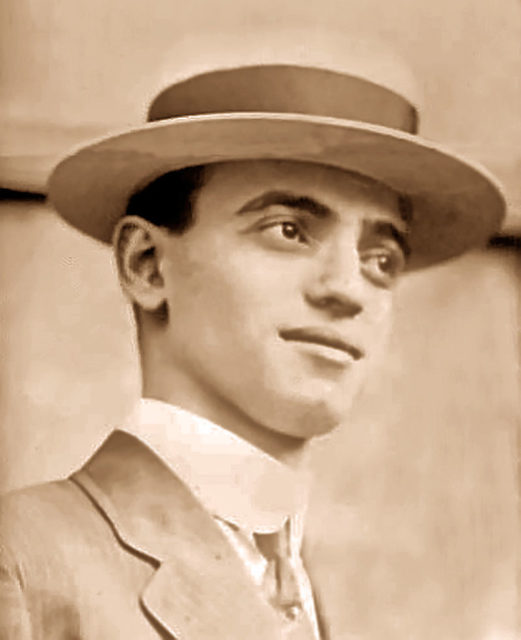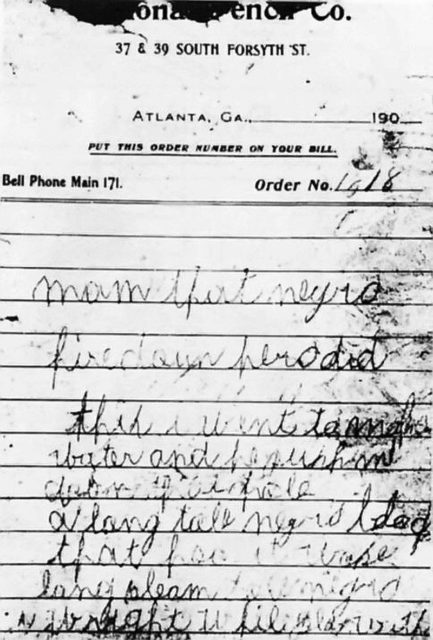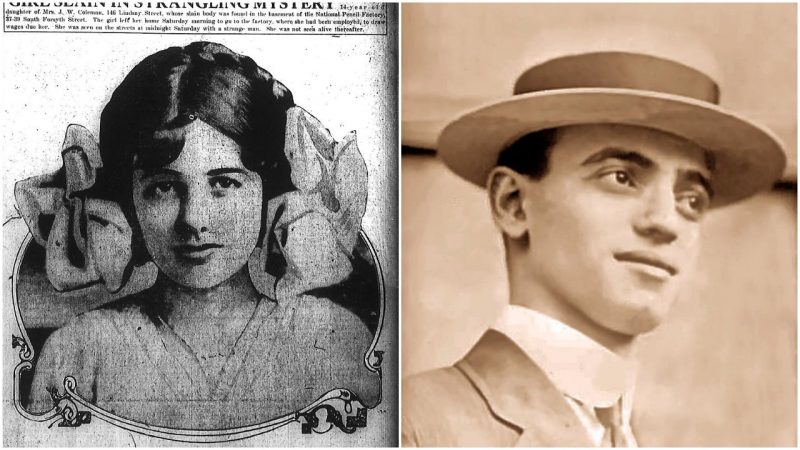On April 26th, 1913, Confederate Memorial Day, a day set aside to remember the armed forces of the Confederacy, most of the stores and business were closed in Georgia, as they were in other Southern states.
However, one of the offices in the National Pencil Company in Atlanta was open that day. Inside, superintendent Leo Frank, a young Cornell University graduate, was working on his financial report and delivering wages to the employees.
One employee, 13-year-old Mary Phagan, stopped by to obtain her wages and what happened to her that day had lasting repercussions for Georgia, the South, and the entire United States. Mary Phagan was murdered in the factory where she worked for only 10 cents per hour. There was an investigation to find her killer, a trial, public outrage, and finally a lynching.
In 1913, the agrarian economy of Atlanta had turned into an industrial one, transforming the city into a hub for transportation of agricultural products. Most of the Southern working facilities operated under terrible labor conditions with no proper heating or cooling systems and inadequate sanitary facilities. The biggest issue, however, that of child labor. As reported in the 1913 Atlanta Georgian, the state’s standards regarding children workers were the worst in the country, with employers hiring children as young as 10. The Populist Party blamed Jewish businesses for exploitation of child labor, although it was practiced by businesses owned by people of all religions.

The National Pencil Company, supervised by Leo Frank, a Jewish man who moved to Atlanta from the North in 1908, hired children to work in low-wage jobs. It was common for 13-year-0ld boys and girls to perform manual labor in the city, and their families depended on their wages.
The next day, Phagan’s body was found by an African American worker, Newt Lee, in the basement of the factory. Reportedly, she had been strangled and struck on the head and sexually assaulted. Several strange notes were found near the body, almost incomprehensible, describing a “tall black negro.”
Of course, Lee was the first suspect. The second suspect was the company’s sweeper, another African American named Jim Conley, who had been at the factory on the day she disappeared, but initially denied any wrongdoing. After continuous interrogation he implicated Leo Frank, his employer.
When Frank was questioned, he explained that Conley’s story was a fabrication. In Frank’s version of the story, Mary had collected her wages and left the office, whereupon he finished work and left home.

However, at trial, Frank was found guilty by a jury. The judge sentenced him to death by hanging.
The “Leo Frank case” gained huge national interest and increased anti-Semitism across the country. The New York Times and Collier’s Weekly argued for Frank’s innocence and against the general public opinion which fueled anti-Semitic policies.
Although most Georgians felt that justice would finally be served by an execution, the Northerners criticized Frank’s sentence as a futile attempt by Georgia’s authorities to make up for their inability to find and prosecute the person who were truly responsible for Mary’s death.
Frank’s legal team appealed the sentence and after a lengthy process the death sentence was commuted to life imprisonment. The public were outraged and quickly a group of local prominent men calling themselves the “Knights of Mary Phagan” planned to kidnap Frank and deliver their own form of justice.

Frank was abducted from prison on August 16, 1915, and was summarily lynched around 7:00 am the next day. Before he was killed, he asked that his wedding ring be given to his wife.
Historians attribute a groundswell of support for the Klu Klux Klan to the Mary Phagan murder and aftermath. It is by no means certain that Frank murdered the young girl and is debated to this day.
The case was crucial to the formation of the Anti-Defamation League, formed to fight anti-Semitism.
